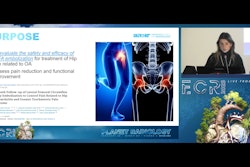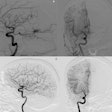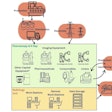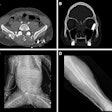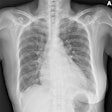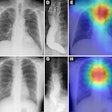Interventional radiologists in Turkey have reported success with an emerging minimally invasive procedure for treating chronic pain in toe joints due to inflammatory arthritis, gout, or osteoarthritis.
The procedure is called transarterial microembolization (TAME) and was found to significantly reduce pain as well as the use of drugs in 27 patients who had exhausted virtually all other options, noted lead author Çağrı Erdim, MD, of Başakşehir Çam and Sakura City Hospital in Istanbul.
“TAME was associated with significant reductions in pain severity and analgesic use among patients with chronic first [metatarsophalangeal joint] pain refractory to standard medical and supportive therapies,” the group wrote. The study was published on October 22 in the Journal of Vascular and Interventional Radiology.
The first metatarsophalangeal joint (MTPJ) is located at the base of the big toe and is a common site of pain due to arthritis, gout, injury (“turf toe”), or even overuse. The condition significantly affects foot biomechanics and quality of life. Conservative treatments such as painkillers and steroid injections are commonly used to treat the condition, but often fail to provide lasting relief, the authors explained. For such “refractory” cases, surgical interventions are considered.
Alternatively, TAME is an imaging-guided procedure that reduces blood flow to inflamed blood vessels that are causing the pain. Interventional radiologists perform the procedure using a small catheter to direct tiny particles into vessels feeding the target joint. While the procedure has been used successfully to treat patients with adhesive capsulitis, knee osteoarthritis, plantar fasciitis, and Achilles tendinopathy, there is little evidence of its use in small joints, the authors noted.
The researchers aimed to explore its use as an interventional strategy for managing chronic pain originating specifically from the first MTPJ.
Between April 2024 and May 2025, the group enrolled 27 patients (median age, 64) who had chronic treatment-refractory MTPJ pain for a median of 10 (range, 5 to 30 years). The median follow-up duration after the procedure was five months, with patients’ pain severity recorded at baseline and weekly based on the Visual Analog Scale (VAS).
According to the results, median VAS scores decreased from 9 (range, 5-10) to 1 (range, 0 to 6) at final follow-up (p < 0.0001). In addition, weekly analgesic requirements dropped from a median of seven doses per week (range, 0 to 20) to 0 (range, 0 to 3, p < 0.0001), and no additional pharmacological or nonpharmacological interventions were introduced after the embolization.
One patient experienced transient skin discoloration, which resolved within two hours, with the event classified as Grade 1 (mild), the researchers reported.
“These findings suggest that targeted embolization of pathological hypervascularity surrounding the MTPJ may offer a meaningful therapeutic option for a population that traditionally faces limited nonsurgical alternatives,” the group wrote.
Despite the promising results, the researchers noted certain limitations in the study, including the small sample size and short follow-up period, and concluded that larger, controlled studies are warranted to confirm these preliminary findings.
The full study is available here.






